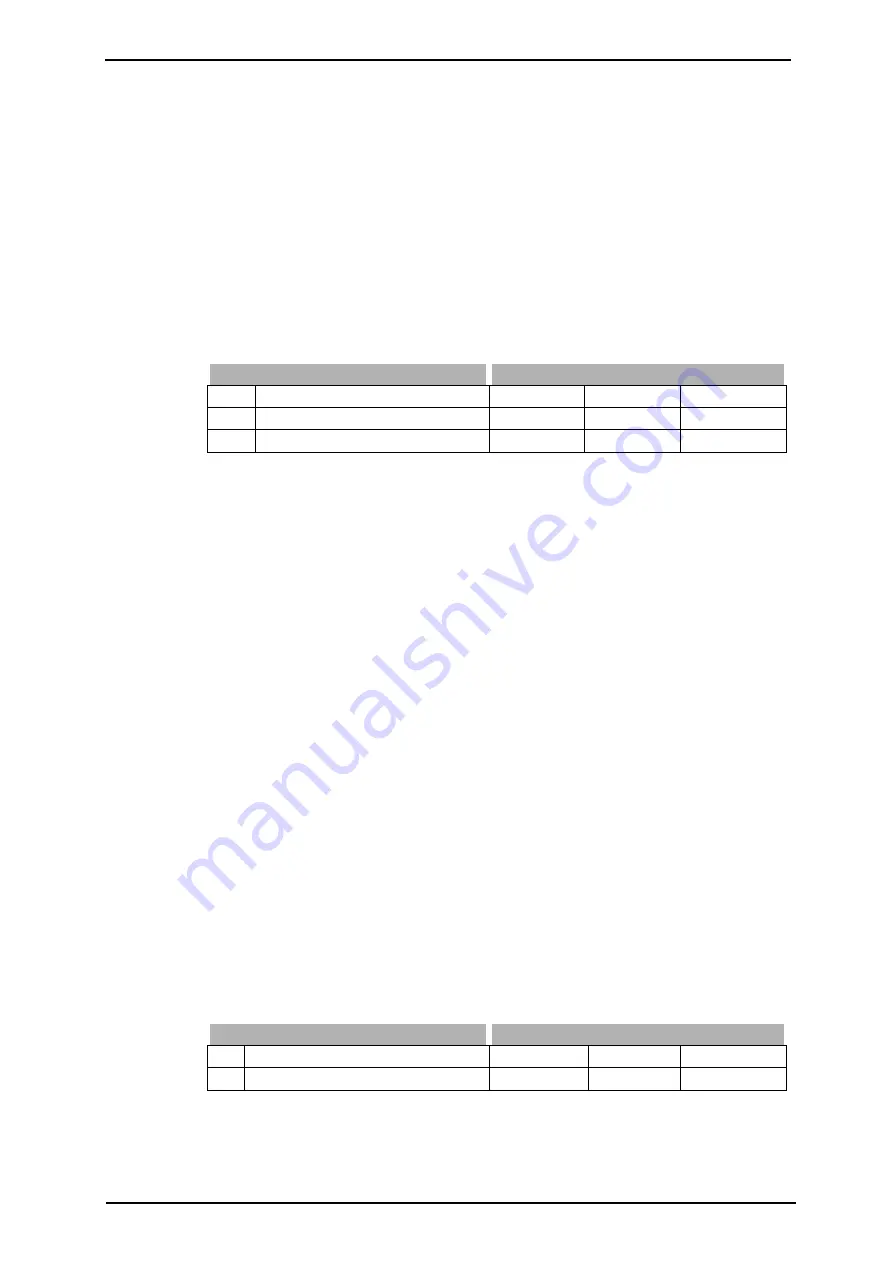
KFU 2-/4-
102
9.2
Further motor parameters
In particular the field-oriented control requires the determination of further data which
cannot be read off the rating plate of the 3-phase machine for the precise calculation
of the machine model. In the course of the guided commissioning, the parameter
identification was carried out to measure the further motor parameters.
9.2.1 Stator
Resistance
The resistance of the stator winding is measured during the guided commissioning.
The measured value is saved as a phase value in parameter
Stator resistance
377
and is 3 times smaller than the winding resistance in delta connection.
By default, the equivalent stator resistance of a standard motor is entered to match
the reference output of the frequency inverter.
Parameter
Settings
No.
Description
Min.
Max.
Fact. sett.
377
Stator
resistance
1)
0 m
65535
m
R
sN
1190
Stator
resistance
2)
0.001
100.000
10.000
1)
Available in configurations 1xx, 2xx, 4xx (Parameter
Configuration
30
).
2)
Available in configurations 5xx (Parameter
Configuration
30
).
Stator resistance asynchronous motor:
The value of the stator resistance can be optimized while the machine is in no-load
operation. At the stationary operating point, the torque-forming current
Isq
216
and/or
the estimated
Active current
214
should be zero. Due to the temperature-dependent
of the stator resistance, the adjustment should be done at a winding temperature
which is also reached during normal operation.
A correct measurement will optimize the control functions.
Stator resistance asynchronous motor:
The value of the stator resistance of the synchronous motor is entered during the
guided commissioning. The value of the stator resistance is used for adjustments of
the current controller and should be therefore entered as exact as possible. The
sta-
tor resistance
1190
is the value between two motor phases and can be taken usually
from the data sheet of the motor.
9.2.2 Leakage
Coefficient
The leakage coefficient of the machine defines the ratio of the leakage inductivity to
the main inductivity. The torque and flux-forming current components are thus cou-
pled via the leakage coefficient. Optimization of the leakage coefficient within the
field-orientated control systems demands acceleration to various operating points of
the drive. Unlike the torque-forming current
Isq
216
, the flow-forming current
Isd
215
should be largely independent of the load torque. The flow-forming current compo-
nent is inversely proportional to the leakage coefficient. If the leakage coefficient is
increased, the torque-forming current increases and the flux-forming component
drops. The adjustment should result in a relatively constant actual current
Isd
215
,
matching the set
Rated magnetizing current
716
, regardless of the load on the drive.
The sensorless control system uses the parameter
Leakage coefficient
378
in order
to optimize the synchronization to one drive.
Parameter
Settings
No.
Description
Min.
Max.
Fact. sett.
378 Leakage Coefficient
1.0 %
20.0 %
7.0 %






























